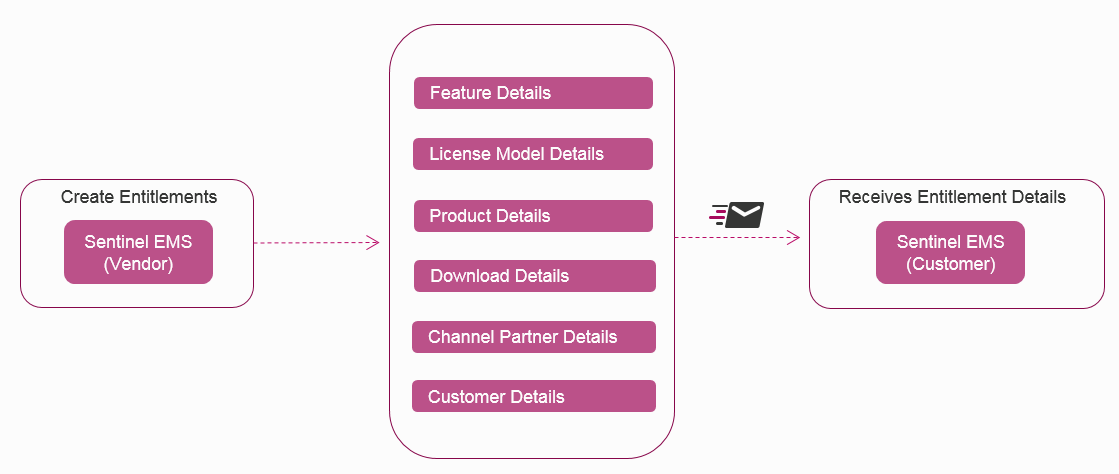Introducing Entitlements
|
|
>New to Sentinel EMS?
>Start with Entitlement Creation?
|
What Is an Entitlement?
An entitlement defines the rights of an end user to use a software package or service. An entitlement is an order for products that contains details of the products and who can use these products and the duration for which the order is valid. The end user can activate the entitlement, which generates a license to use the software according to the defined terms. Each entitlement is identified by a unique entitlement ID (EID). The products associated with an entitlement are identified by unique product keys. An entitlement defines the following:
> Product details. When products are added to an entitlement, they are referred to as line items of that entitlement.
> Quantity of the products that can be consumed by the customer.
> Duration for which an entitlement is valid.
>Whether the entitlement can be activated.
>Whether the entitlement must be used as a single entity.
Entitlement Ownership and Delivery
The following types of users manage and use entitlements:
>User: The software vendor employee who is responsible for performing various entitlement-related tasks in Sentinel EMS. These users are assigned access rights in Sentinel EMS using roles. Various teams in the software vendor’s organization are responsible for different entitlement management activities, such as product management, sales, order generation, fulfillment, and customer support. Generic roles can be created for each team, or specific roles can be assigned to each user.
>Channel Partner: An organization that is allowed to re-sell the software vendor’s products. End users can buy directly from the software vendor or from a channel partner.
>Channel Partner User: A channel partner employee that uses Sentinel EMS to manage entitlements for their customers.
>Customer: A current or potential buyer or a user of entitlements. Typically, a customer is a company or organization. You generate entitlements for a customer who has placed an order.
>Contact: An individual who may be associated with a customer organization or could be independent. A contact is a user who usually activates the entitlements.
Customers and contacts are the end users of an entitlement. Sentinel EMS provides the following portals to generate, deliver, and consume entitlements:
>Vendor Portal: Used by the software vendor's personnel (user) primarily for managing products and entitlements.
>Channel Partner Portal: Used by channel partner’s user (channel partner user). The channel partner user can edit, split, transfer,
>Customer Portal: Used by the software vendor's customers (customer and contacts). These end users can log on to the portal to activate entitlements. They can also view and edit their profile information.
The following image displays the flow of creating and delivering an entitlement:
